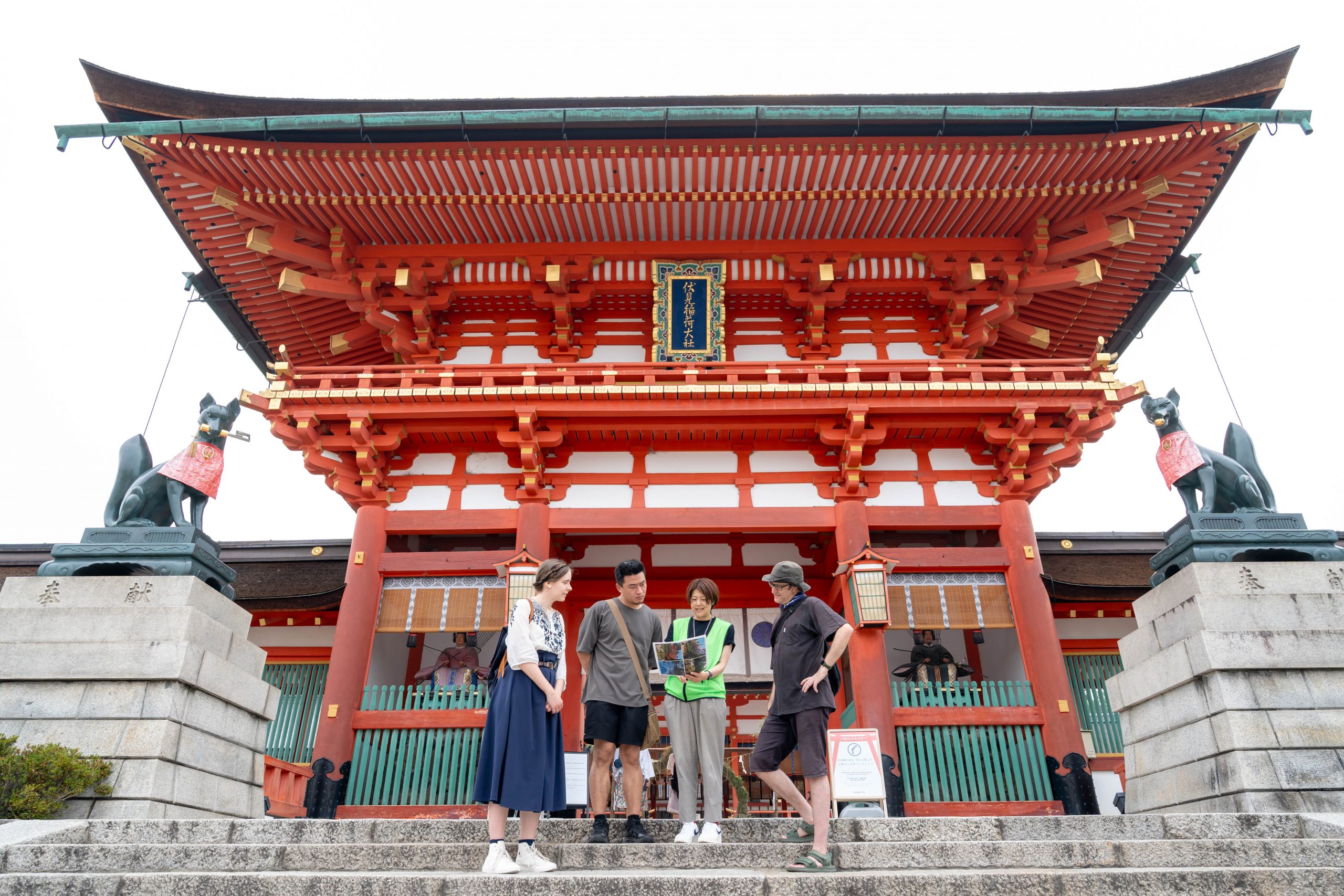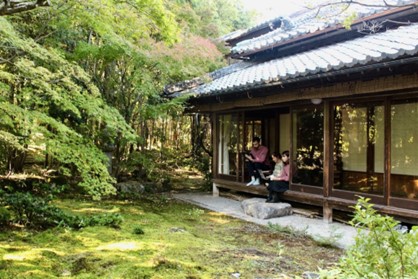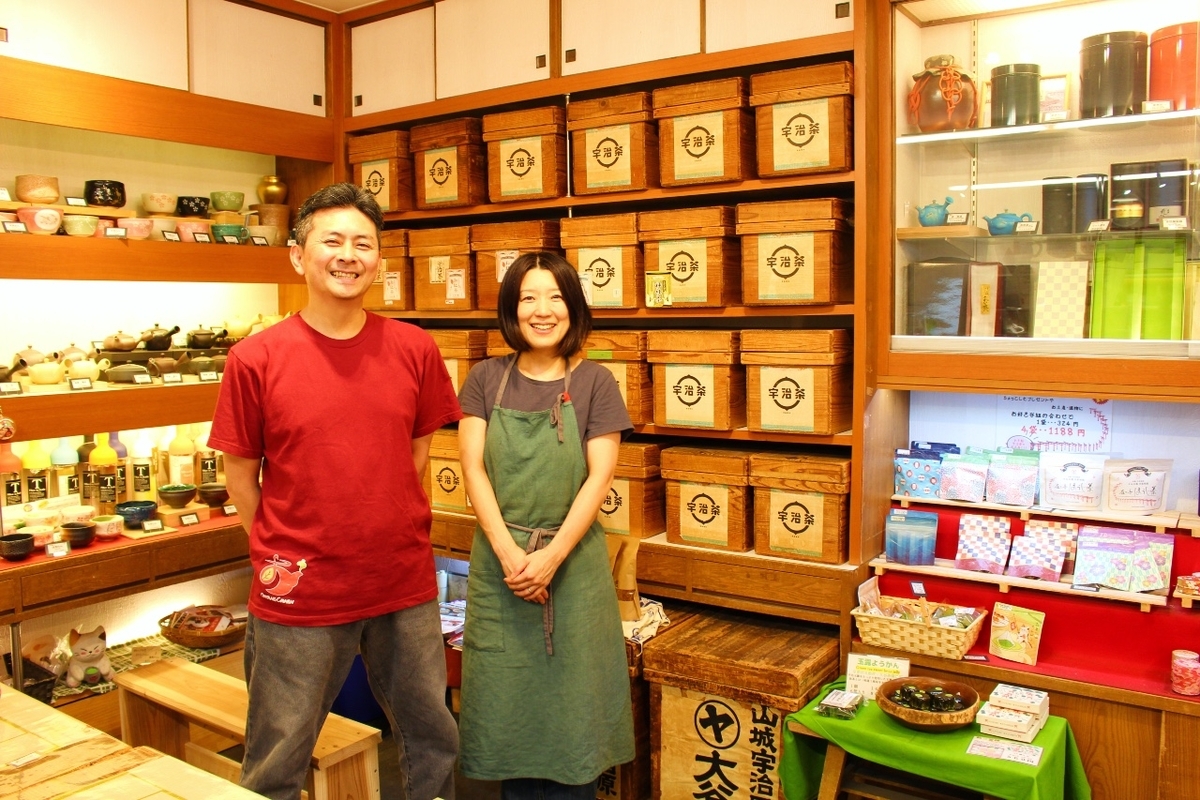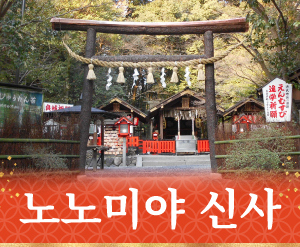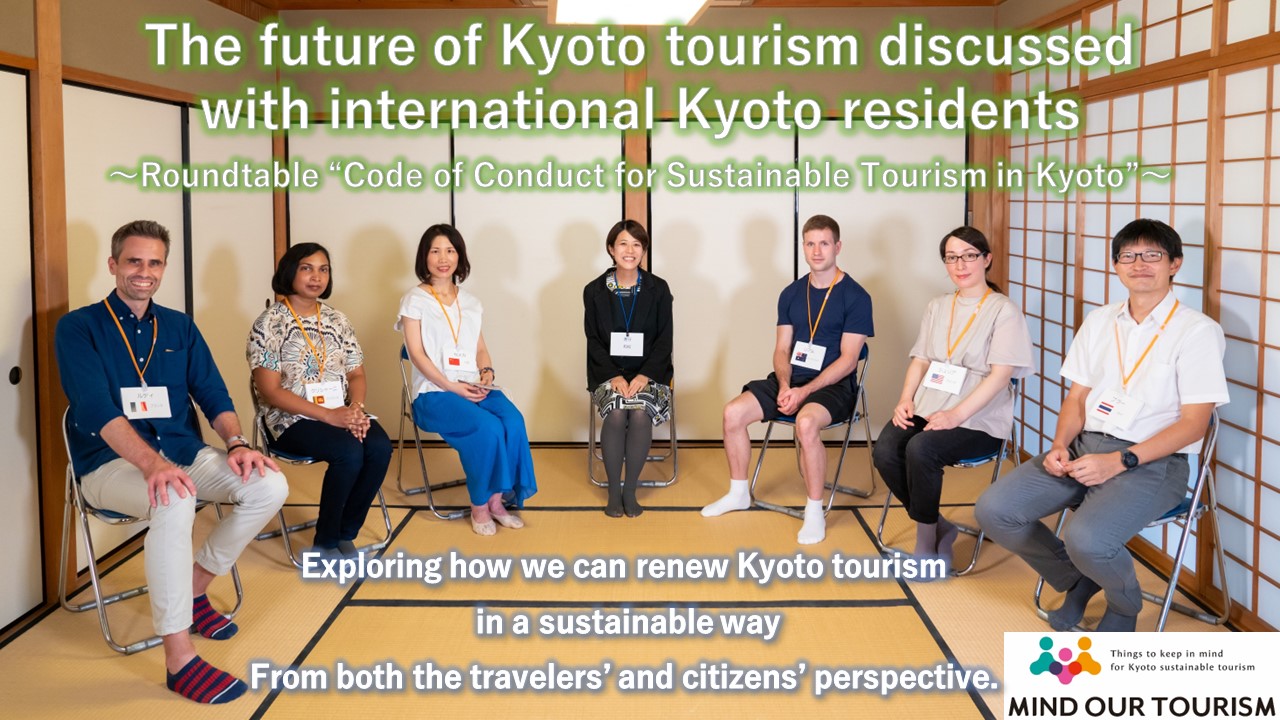
2020년 코로나19 팬데믹이 시작된 이후, 전 세계 사람들은 여행 제한에 직면했고, 특히 관광 관련 산업에 심각한 영향을 미쳤습니다. 교토도 예외는 아니었습니다. 여행사부터 숙박, 음식점, 전통 공예 업체에 이르기까지 다양한 업종이 심각한 타격을 입었습니다. 그러나 현재 일본 입국 제한이 크게 완화되면서, 일부에서는 혼잡과 매너 관련 문제가 다시 발생할 수 있다는 우려를 표명하고 있습니다.
교토시와 교토시 관광협회는 협력하여 홍보 활동을 펼치고 있습니다. 교토의 지속 가능한 관광을 위한 행동 강령 전염병 이전의 상황이 재발하지 않도록 예방하고 관광 산업, 관광객, 주민 등 교토 관광에 관련된 모든 사람에게 다가가 교토의 탁월한 가치를 미래에 전달하고자 합니다.
이번에는 교토에 거주하는 외국인들과 함께, 여행객과 시민의 관점을 모두 갖춘 분들을 만나, 팬데믹 이후의 세계에 맞춰 교토 관광을 어떻게 업데이트할 수 있을지 논의했습니다.

색인
참가자 프로필

루디(프랑스)
프랑스/벨기에 국경 근처에서 자랐습니다. 프랑스 대학교에서 다문화주의를 전공했습니다. 현재 교토에서 미얀마인 아내와 함께 살고 있습니다.
크리샤니(스리랑카)
10년 전 일본인 남편과 결혼했습니다. 교토 국제교류회관에서 근무하고 있습니다.
세스카(중국)
저장성 출신. 교토 국제교류회관에서 사진작가 겸 공공 서비스 통역으로 활동. 신사/사찰 참배를 즐긴다.

리암(호주)
도시샤 대학교 대학원생입니다. 올해 4월 교토로 이사했습니다. 6년 전에도 교토에 거주했습니다. 브라질리언 주짓수를 즐깁니다.
줄리아(미국)
미국에서 태어나 어렸을 때 일본에 처음 왔습니다. 자라면서 일본을 오갔습니다. 통역/번역/가이드를 하고 있습니다. 가이드를 하지 않을 때도 관광을 좋아합니다.
프라치(태국)
방콕 출신. 대학 시절부터 교토에 거주. NPO 직원 및 통역/번역가. 가모가와 강에서 조깅하는 것을 즐긴다.
진행자/면접관: 교토시 관광협회 아리마츠
특별 감사: 교토시 국제교류재단
*본 토론은 2022년 9월 3일에 진행되었습니다.
Q1. 10월에 예정된 국경 통제 완화 조치와 대규모 완화 조치에 대한 귀하의 반응은 어떠셨습니까?
아리마츠: 마지막으로 일본도 다른 국가들의 입국 제한을 완화하고 있습니다. 10월부터 입국 가능 인원 제한이 해제될 예정이라고 들었습니다. 이러한 정책 완화 조치에 따라 귀국하실 계획이 있으신가요?
프라흐: 마침내 다음 주에 잠깐 복귀하게 되었습니다.
줄리아: 아직 돌아갈 계획을 세우지 않았지만, 생각해보려고 합니다.
크리샤니: 내년 어느때쯤 다시 갈 계획이에요.
루디: 프랑스는 제한이 해제되어 기술적으로는 돌아갈 수 있었지만, 새로운 변종이 계속 생겨서 (프랑스에 가게 된다면) 일본에 다시 입국하기 힘들 것 같아서 아직 돌아가지 못했습니다.
세스카: 중국은 엄격한 규제를 하고 있어서 지금 중국으로 돌아가면 일본으로 돌아오지 못할 수도 있어서 아직은 돌아갈 계획을 세우지 않았습니다.
리암: 아직은 일본 방문 계획이 없지만, 방문하게 된다면 순조롭게 일본에 재입국할 수 있기를 바랍니다.
아리마츠: 반면에, 귀하의 모국에 있는 친구나 가족이 곧 일본을 방문하고 싶다고 말하는 것을 들었습니까?
프라흐: 많은 친구들이 소셜 미디어에서 곧 일본에 오고 싶다고 말하는 걸 봤어요.
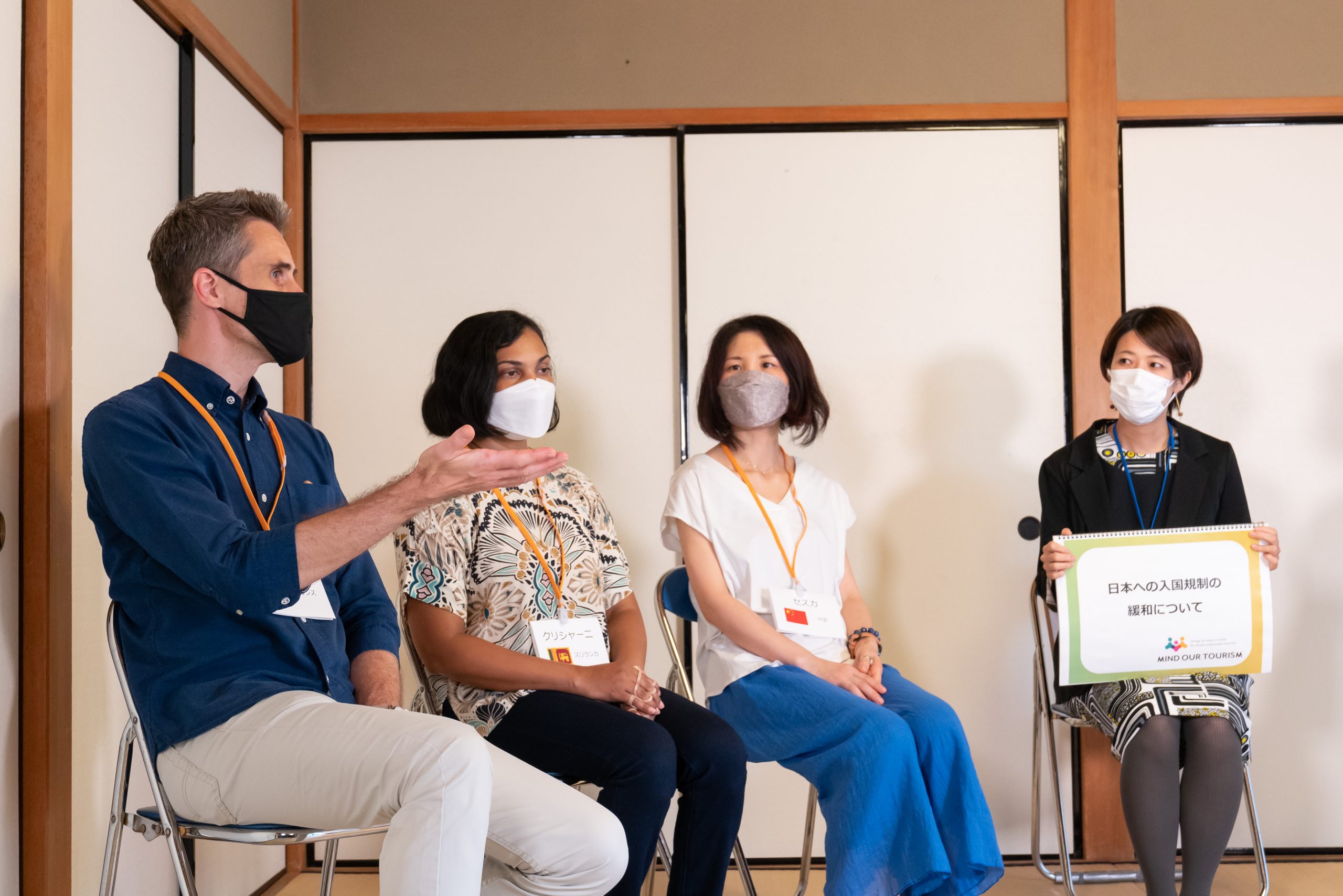
루디: 프랑스에 있는 친구들이 팬데믹에 대해 이야기할 때, "팬데믹 당시"처럼 과거형으로 말해요. 마치 자기들끼리 다 끝난 것 같은 느낌이고, 평소에는 마스크도 안 쓰잖아요. 마치 일상으로 돌아온 것 같아요. 일본은 섬나라라서 사람 흐름을 통제할 수 있는 반면, 유럽은 대부분 나라가 육지로 연결된 국경을 공유하고 있어서 통제하기가 쉽지 않아요. 아마 이 부분이 우리 감정의 차이를 어느 정도 설명해 주는 요인이 아닐까 싶어요.
아리마츠: 해외 유학생 수가 늘어났나요?
리암: 해외 유학생 수가 점차 늘어나고 있는 것 같아요.
줄리아: 하지만 이미 많은 분들이 일본 유학을 포기하셨다고 들었습니다. 미국의 유명 대학들이 올해 유학 프로그램을 취소했다고 하더군요. 앞으로 일본에 대한 팬을 잃게 될 것 같아 안타깝습니다. 앞으로 일본에 큰 손실이 되지 않을까 걱정입니다.
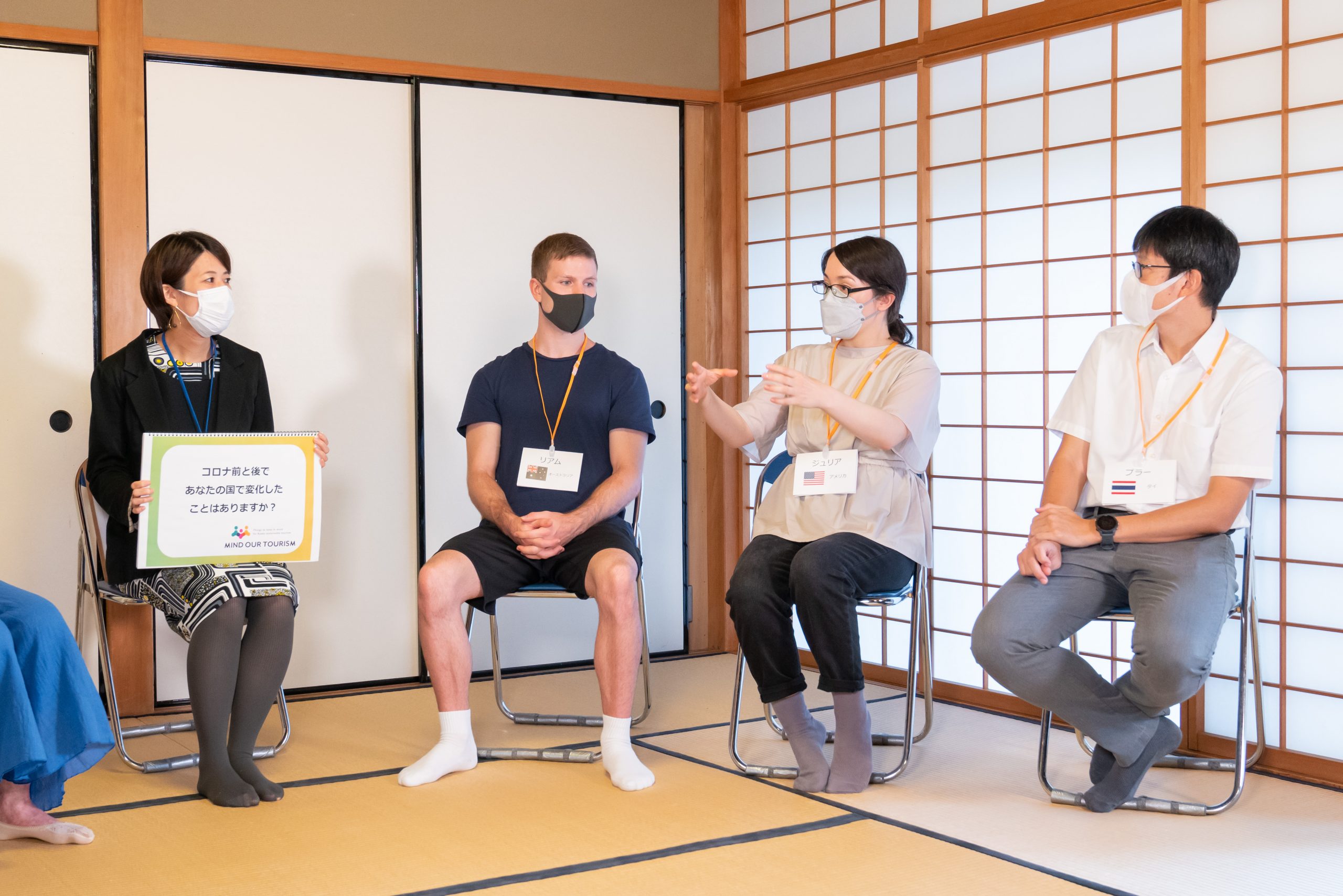
Q2. COVID-19의 세계적 대유행은 세상, 문화, 그리고 우리의 일상생활을 어떻게 변화시켰나요?
아리마츠: 귀하의 국가에서 COVID-19 이전과 이후에 위생 관행을 포함한 일상 생활 습관이 바뀌었다고 생각하십니까?
크리샤니: 스리랑카에서는 일상생활에서 마스크를 써본 적이 없어서 가게에서 파는 걸 본 기억도 없어요. 그런데 갑자기 "마스크를 쓰세요"라는 말에 다들 깜짝 놀랐어요. 마스크를 찾아봤지만 살 수가 없었죠. 이제는 모두가 마스크를 마치 당연한 것처럼 쓰고 다닙니다. 마치 새로운 문화가 유입된 것 같아요.
줄리아: 서양 국가들은 이제 모두 마스크 착용 의무화 정책을 시행하고 있다고 생각할지 모르지만, 사실 미국 내에서도 지역에 따라 다르고, 많은 사람들이 도시에서 여전히 마스크를 쓰고 있습니다. 특히 일부 주나 지역에서는 마스크 착용을 의무화하고 위반 시 벌금을 부과했기 때문에, 새로운 관습에 익숙해진 미국인들이 있다고 들었습니다.
아리마츠: 그렇군요. 일부 국가에서는 마스크 착용이 그렇게 드문 일이 아니게 되었네요. 팬데믹으로 인한 일상생활의 변화에 대해 말씀드리자면, 디지털화가 어떻게 진행되고 있다고 생각하시나요?
프라흐: 코로나19 바이러스 확산을 막는 관점에서 볼 때, 현금을 다루는 것은 확실히 우려사항이었고, 아마도 이것이 팬데믹 이후 디지털화가 극적으로 가속화된 이유일 것입니다.
아리마츠: 일본에서는 팬데믹 이전부터 필요했던 무현금 거래가 진전되었습니다.
루디: 프랑스에서는 팬데믹 이전에는 무현금 거래가 그다지 대중적이지 않았지만, 팬데믹 이후 갑자기 대중화되었습니다.
세스카: 중국은 이제 거의 현금이 없어졌어요. 이제 다양한 앱으로 거의 모든 걸 할 수 있어서 스마트폰만 들고 다니죠. (웃음) 게다가 일본에서도 위챗과 유니온페이로 결제할 수 있어서 정말 편리해졌어요.
프라흐: 그런데 일본 계산대에 가면 제가 이용하는 무현금 거래 서비스가 가능한지 알아내는 데 어려움을 겪습니다. 종류가 너무 다양하거든요. 좀 더 작은 단위로 정리하면 더 편리할 것 같아요.
아리마츠: 더 많은 식당, 박물관, 그리고 공공시설들이 사전 예약 시스템을 도입하고 있습니다. 해외 관광객이 더 많아지면, 이러한 시스템 중 이용하기 어려울 만한 부분이 있을까요?
리암: 사전 예약 시스템을 계속 사용하더라도 영어로 제공되지 않으면 어려울 것 같습니다.
루디: 코로나19 대응 조치의 일환으로 셀프 계산대를 도입한 슈퍼마켓과 편의점에서 영어가 가능한 (기계)를 몇 대 봤습니다. 앞으로의 발전이 기대됩니다.

프라흐: 영어가 모국어가 아닌 나라에서 온 사람이라면 영어를 이해하지 못하면 불편할 수 있습니다. 이미 여러 웹사이트에 영어, 중국어, 한국어 버전이 있지만, 더 많은 소수 언어 버전이 있다면 사용하기 더 쉬울 것 같습니다. 자동 번역 기능이 발전했지만, 소수 언어 번역은 종종 부정확합니다.
Q3. 해외 사람들은 교토의 풍습에 대해 어떻게 생각하나요?
아리마츠: 교토에 살면서 예상치 못한 관습이나 지역 규칙이 있었나요?
줄리아: 집 앞을 쓸는 게 일상이에요. 좀 특이한 건, 사람들이 집 앞 양쪽 이웃집 앞마당 3분의 1 정도, 그리고 길 건너편 이웃집 앞마당도 조금 쓸어내린다는 거예요. 그런데 저는 개인적으로 길가에 있던 아름다운 가을 단풍이나 봄 벚꽃잎이 아침 일찍 사라지는 걸 보면 좀 슬프기도 해요. (웃음)
아리마츠: 교토에서는 사람들이 집 앞을 청소하는 모습을 자주 봅니다.
루디: 그리고 교토에서는 여름에 더위를 식히려고 집 앞에 물을 뿌리는데, 프랑스에서는 물이 비싸서 그렇게 할 수 없어요. 처음 사람들이 그렇게 하는 걸 봤을 때, 그 동네 사람들은 다 부자일 거라고 생각했어요.
프라흐: 쓰레기 분리수거는 꽤 복잡해요. 외국인들이 이해하기 어려운 규칙들이 있어요. 태국에서는 쓰레기를 그렇게 많이 분리수거하지 않았고, 골판지, 병, 캔 같은 재활용품을 팔았죠. 최근 태국에서도 쓰레기 분리수거를 하기 시작했는데, 좋은 관습이라고 생각해요.
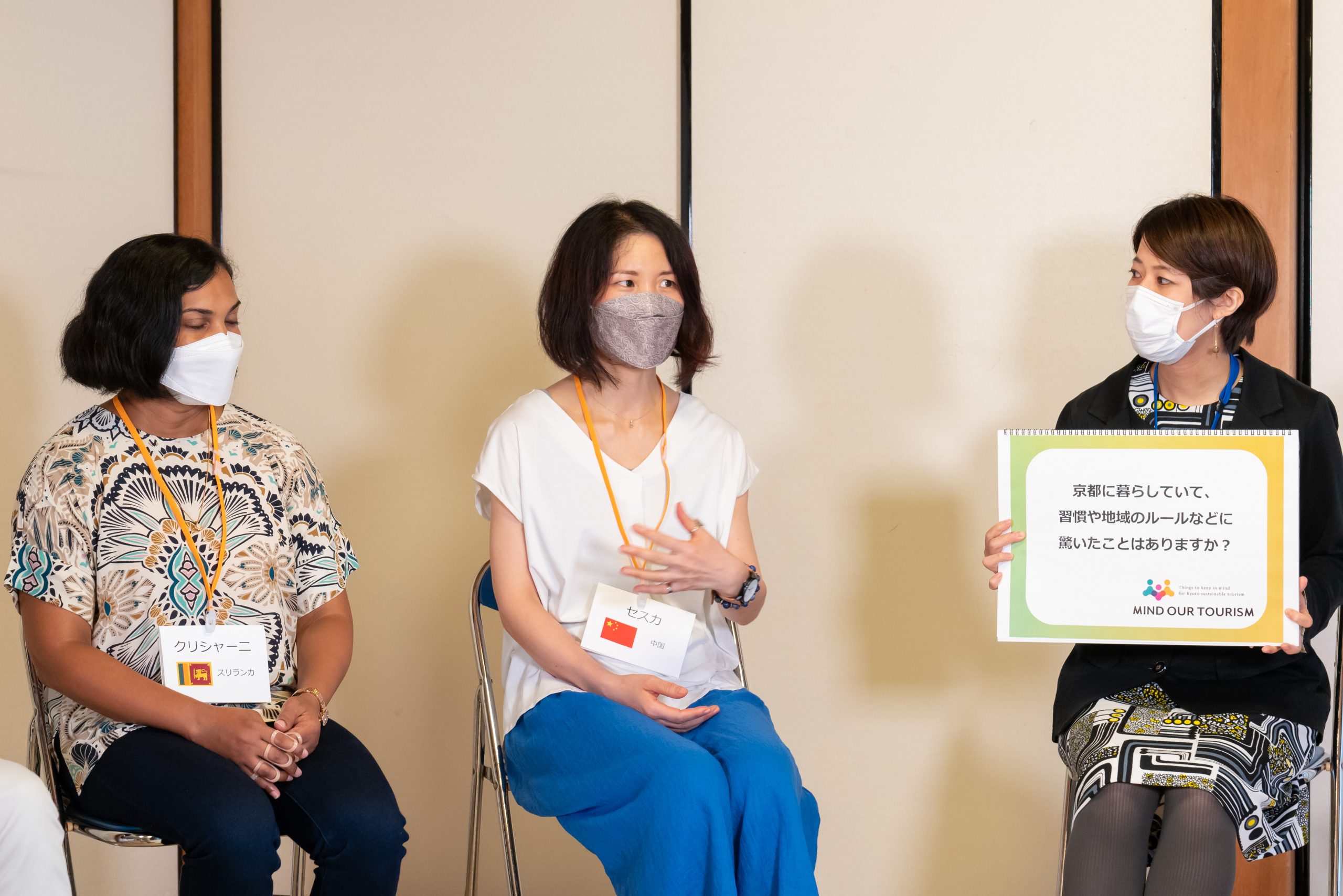
세스카:패스트푸드 체인점과 편의점 간판 색깔을 보고 깜짝 놀랐어요. 빨간색 바탕의 간판이 갈색이나 흑백으로 바뀌어 있었죠. 교토에는 나름의 규칙이 있다는 걸 알게 됐어요.
Prach: 교토에도 건물 높이 규제가 있어요. 방콕에도 고층 빌딩이 연이어 들어서서 이제는 사방이 건물로 가득 차 보여 답답한 느낌이 들어요. 반면 교토는 건물 높이가 규제되어 있어서 도시를 둘러싼 언덕 위에서 바라보는 풍경이 아름답습니다. 정말 멋지고 앞으로도 이렇게 유지되었으면 좋겠어요.
루디: 프랑스도 경치와 건축물을 보호한다는 점에서 비슷할지도 모릅니다. 문화재로 등록된 건축물 주변의 주택에는 다양한 규칙이 있습니다. 예를 들어, 일부 주택은 페인트칠을 새로 할 때에도 현재 색상을 유지해야 합니다. 이는 교토와 비슷합니다. 마치야(町家)가 보호되기를 바라는 외국인들이 많습니다. 마치야가 허물어지는 모습은 안타깝습니다. 모든 주택을 보존하는 것은 불가능하지만, 아무도 모든 주택이 사라지기를 바라지 않습니다. 저는 마치야가 교토의 삶의 방식을 담고 있는 교토의 문화 유산으로 보존되기를 진심으로 바랍니다.
팬데믹으로 인해 우리 일상생활에 일어난 변화와 새로운 관습의 발전은 오늘날 참여국을 포함한 수많은 국가에 영향을 미친 전 세계적인 현상입니다. 비록 우리가 고립되었지만, 우리 중 많은 사람들이 그 어느 때보다 더 많은 공통의 경험을 할 수 있을 것입니다.
반면, 팬데믹 이전부터 추진되어 온 디지털화와 무현금 거래 시스템은 일본보다 해외에서 더 발전한 것으로 보입니다. 따라서 방문객들이 일본 방문 시 불편함을 느끼지 않도록 따라잡는 것이 필수적일 것입니다.
차이점에 대해 이야기하자면, 교토 주민들의 일상생활과 관습은 교토 방문객들의 관심을 끌 만한 요소일 것입니다. 2부에서는 이 주제를 심도 있게 다루어 상호 이해를 증진할 수 있는 실질적인 방안을 모색해 보겠습니다.


